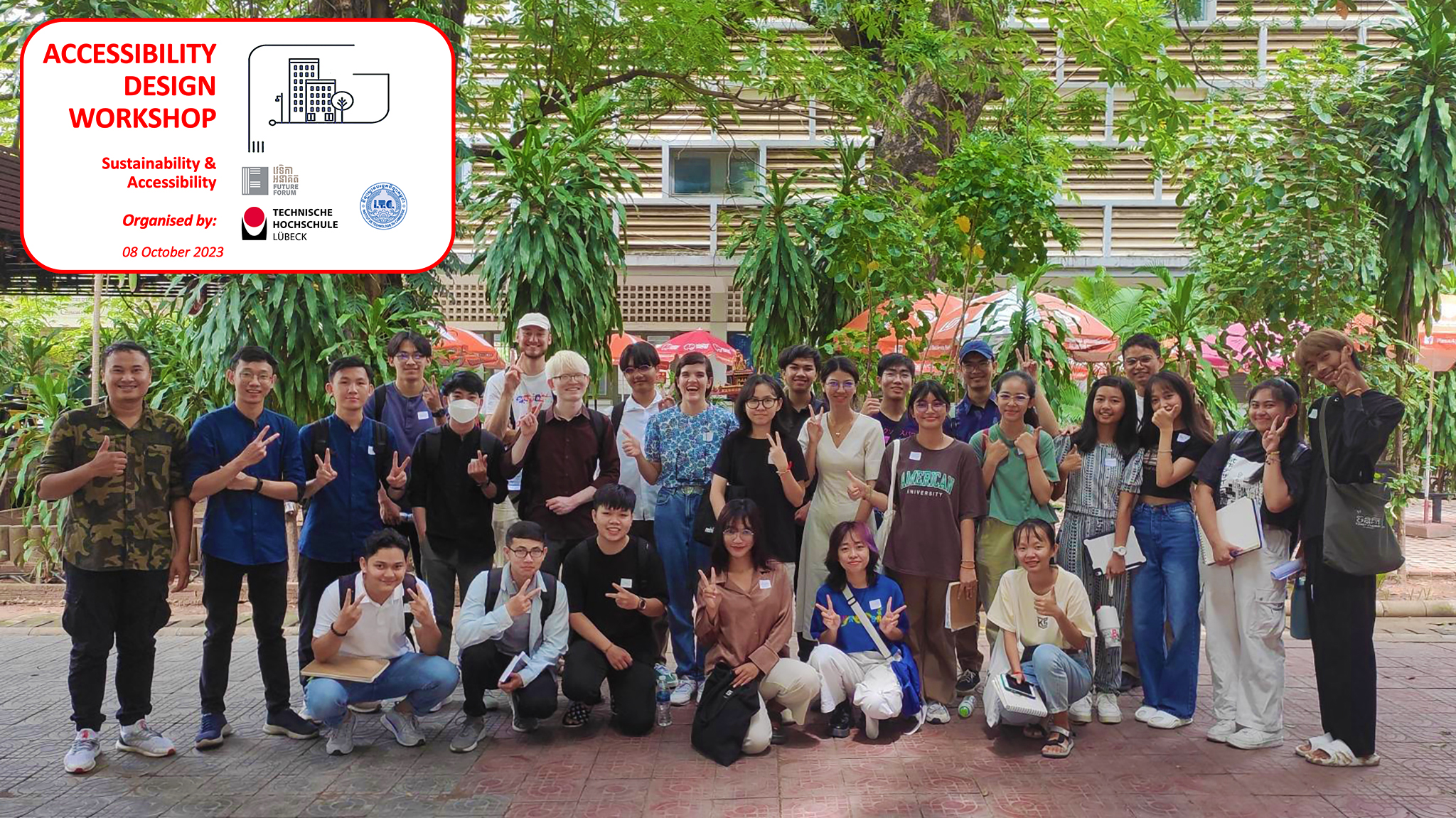On 08 October 2023, the Build4People Work Package “Sustainable Building” together with Future Forum Cambodia organized a workshop about “Accessibility Design” at the campus of the Institute of Technology Cambodia (ITC).
The rationale behind the workshop was UN Habitat’s goal to provide access to safe, affordable, accessible and sustainable spaces as key to implement its Sustainable Development Goals (SDGs) for cities. In this context, the specific needs of people with disabilities should be considered at the starting point and central component rather than afterthoughts in SDGs implementation. This leaves stakeholders and planners worldwide with open questions as to what constitutes barriers in buildings and public spaces, how can accessibility be implemented and how can it be connected to other SDGs.

In Germany, existing policies outline a basic framework and explain how to integrate accessibility planning and barrier-free building into planning and implementation processes with the aim of autonomous living for all. In Cambodia, the Technical Standards on Physical Accessibility Infrastructure for Persons with Disabilities have been in place since 2018. Based on those policies as a starting point and on the specific accessibility needs of people with motoric or cognitive impairments, young children, families with infants, the elderly, etc.) we attempted to develop design solutions for an easy use and access for all.
As part of our workshop we visited the Institute of Technology of Cambodia (ITC), a public campus in Phnom Penh where the buildings, classrooms, as well as the sanitary facilities and the various public spaces (cafes, gardens, etc.) where the participants were asked to identify and record barriers in the different campus areas.

The whole campus was divided in 5 areas of interest, according to this grouping students formed 5 small groups and after a short introduction on accessibility issues and the rationale of the workshop they were sent to inspect the areas and catalogue the barriers according to type, location, affected groups and urgency of improvement.

After each group surveyed their according area, the groups gathered all together and had a discussion about their most important findings. Then we headed to Future Forum offices.
After the Lunch break the second session of the workshop continued with three short presentations. First Christina Karagianni from WP2 gave an introduction for the second session and explained some more details regarding the purposes of the Workshop. She gave an insight to what Build4People team and the people of WP2 sustainable Building in particular are doing. Therefore, she also introduced the Cambodian students to DGNB’s Sustainability Approach.

Christina’s presentation was followed by an input from Ses Aronksada and Leakhena Setha, two local Cambodian architects. They gave an overview of the state of accessibility in Phnom Penh and showed how they want to improve the quality of life in the city. Their work is based on the thought that a lot of problems the capital of Cambodia is facing are already known, but that there still is a lack of knowledge on how to specifically develop sustainable solutions. Therefore, their approach is to deliver best practice design proposals that could have a significant impact on future developments and to implement measures to make Phnom Penh more accessible.

Then Philipp Alt, BA student at Technical School of Applied Sciences Lübeck, and co-organizer of the Workshop continued with further information regarding Accessible Design. He elaborated that usually when people start thinking about barriers, they primarily have wheelchair users in mind. Consequently, he shed a light on other senses that should be thought of while designing the built environment. He also gave an Insight to the wide range of abilities and gave the audience examples from his experience in working with disabled children. Philipp then briefly introduced the 7 principles of Universal Design in order to give the students some guidance that was meant to help them develop their own accessible design proposals for different parts of the ITC Campus.

The 5 groups assembled again and started to discuss many ideas for improving. They brain stormed and used sticky notes to organize their thoughts. Using transparent paper and the printed out map many students drew sketches of their proposals. They did that with great engagement and took part in lively discussions in their groups. After every team developed one or more key proposals all participants came together.
Presentations were held, the students shared what they’ve worked on and explained their thought process. They came up with creative solutions that could really improve the campus and seemed like they would really enjoy to give the topic more thought in the future.
We concluded the workshop by assembling the whole campus map by the individual campus areas the group have worked on and after the official end of the workshop many bi-lateral and small group discussions continued showing the strong engagement amongst the participants.

The Build4People WP#2 team would like to kindly thank ITC for letting us use their campus as a case for this study and Future Forum for the excellent collaboration and co-organisation of such a meaningful event.

